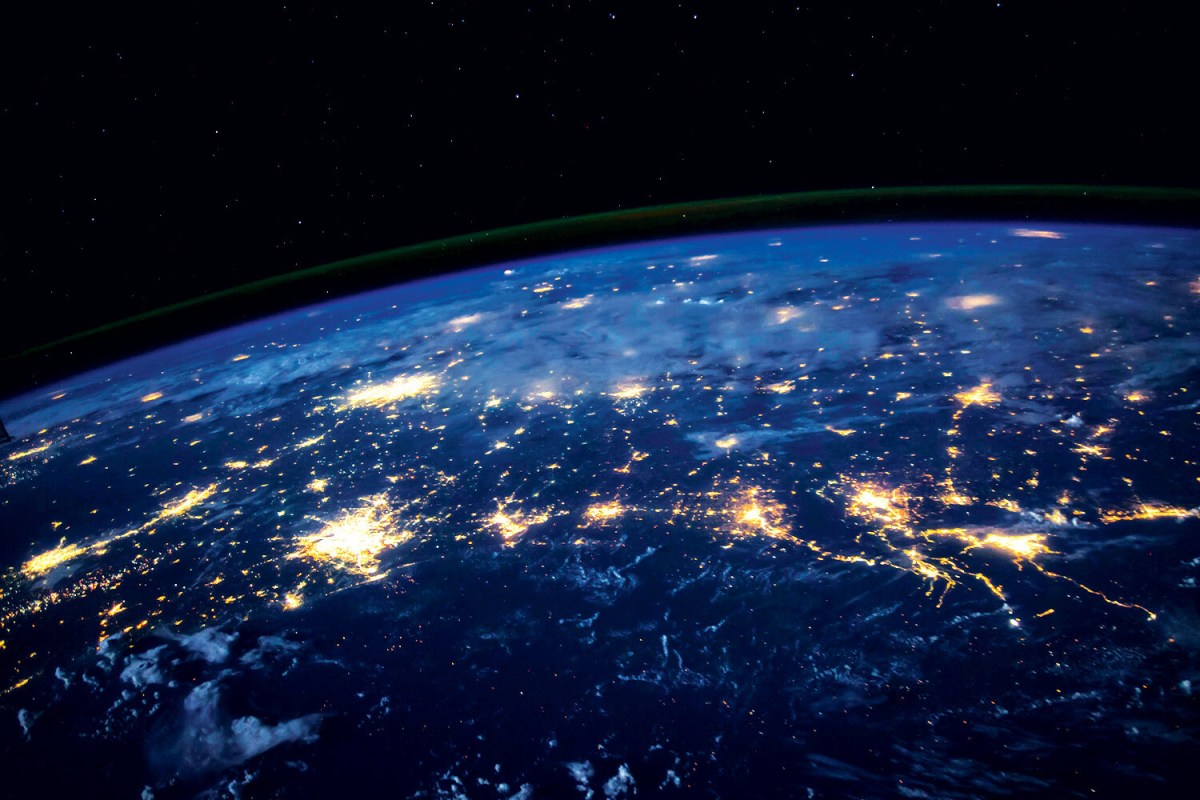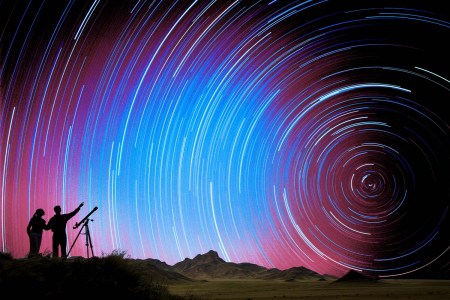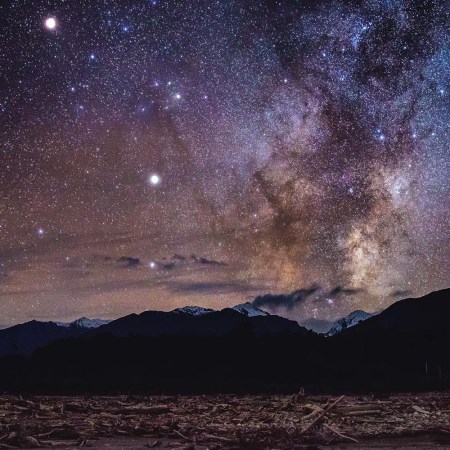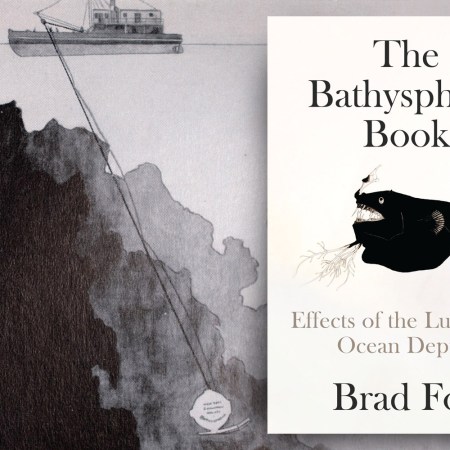If you visit Sark, a tiny island off the west coast of France, you’ll quickly find there is not a great deal to do. The small mass of cliffs only has a population of around 500.
Life here is slow. It’s quiet. But it is also, when the sun goes down, very dark. It has no public streetlights. It has no cars. Indeed, many of Sark’s tourists come here for that reason: to be able to see the night sky. In fact, it is the world’s first “Dark Sky” island, accredited by the International Dark-Sky Association.
“Anybody who comes here is reminded how incredible the night sky can be, such that it’s become a real selling point for the island,” says Kevin Delaney, manager of the Sark Estate, the island’s hospitality venture. “Really, you can’t help but look up in wonderment even if, as an islander, it would be all too easy to take that night sky for granted.”
That would be a mistake, because for most people, entire galaxies have up and disappeared over the last decade. Ten years ago, distant star systems that would have been visible to the naked eye, on a cloud- and moon-free night, are no longer visible today. Why? That’s down to the kind of pollution that we tend not to give much thought to: light pollution. And, thanks to swapping over from orange sodium vapor lighting to white LED bulbs — in streetlights, car headlamps, even at home — it’s getting much worse; the blue light they emit is more likely to be scattered in the atmosphere, a phenomenon made worse by smoke and dust. The light leeches further.
A recent study by the National Science Foundation’s Tucson-based NOIRLab reckons that over that last decade there’s been a 6.5% increase in brightness per year across Europe, with the U.S. seeing a 10.4% increase. Christopher Kyba, a physicist at the Ruhr University Bochum in Germany, and the researcher who has run an extensive mass observation project to assess visible stars, has another way of framing it: that means a child born where 250 stars are visible at night will only be able to see 100 stars by their 18th birthday.
Ask an astronomer, and they’ll tell you this is unequivocally bad news. It’s becoming increasingly hard to locate observatories in places where the study of the heavens — and what that brings in terms of our understanding of Earth and humanity’s place in the cosmos — isn’t negatively affected. “Skyglow,” the way in which the sky continues to glow long after sunset, is getting worse: the light from big cities can now pollute places as far as 150 miles away.
“The same effect with the human eye happens with telescopes, so fainter stars are getting harder to see and virtually all observatories are affected by light pollution now. That makes the work harder and more expensive,” says an understandably bothered Robert Massey, deputy executive director of the Royal Astronomical Society. “What we get to know about the universe is compromised. If something we did changed the daytime sky — turned it orange, say — then rightly there would be an outcry. But because all this happens at night, we just tend to forget about it.”

Sadly, many people are likely not going to be over-concerned about light pollution’s impact on astronomy, either. As far as the breathtaking view of a clear night sky goes, it’s hard to miss what you rarely see, and perhaps have never seen.
“But the stars have always been intertwined with human history, much of our cultural heritage, from celestial navigation to timekeeping, storytelling, agriculture, our myths and legends,” counters Connie Walker, a scientist at NOIRLab. “It’s inspired artists and composers and writers, and a washed-out sky causes a loss of inspiration to the next generation. Against a lot of other problems facing the world, light pollution gets pushed into the background. But I think when we lose the night sky, we lose part of ourselves.”
Light pollution isn’t just about us, either. It also affects multiple ecosystems. City lighting disrupts the behaviors of insects to deadly effect — they’re not the most cuddly of creatures, but they’re vital to the food chain and pollination. Lights left on in buildings affect migratory birds that navigate by star and moonlight, and artificial lighting disrupts their migration patterns. A staggering number of birds — in the realm of 365 million up to one billion in the U.S. alone — are estimated to die every year from impact with glass-fronted buildings. Birds find these hard enough to see in daylight, and at night, with disorienting artificial light, conditions are similarly dangerous.
Likewise, millions of hatchling turtles die every year in Florida because rather than following the moon out to sea, they head up the beach towards the lights of Miami. Nocturnal animals like amphibians and bats are inevitably impacted. City lights affect marine life as far as 20 miles out to sea. It even disrupts nighttime processes that cleanse the air of nitrogen oxides.
“If something we did changed the daytime sky — turned it orange, say — then rightly there would be an outcry. But because all this happens at night, we just tend to forget about it.”
Robert Massey, deputy executive director of the Royal Astronomical Society
Still not so bothered? Perhaps making it more personal will flip a switch. In addition to its impact on wildlife, we also mess up our own bodies’ vital regulation through exposure to artificial light at home. Studies show that those in the highest quartile of ALAN — or artificial light exposure at night — in the bedroom have significantly higher body weight and cholesterol count relative to the lowest quartile. They are also more likely to be depressed and have weaker immune systems.
There are even correlations, though not necessary causation, between the excess use of indoor artificial lighting and hormone-related cancers. As the sun goes down, our bodies start to produce the hormone melatonin to prepare our bodies for sleep. Even low levels of artificial light hamper this, disrupting our blood pressure and heart rate (the lack of artificial light is why people camping tend to feel tired and go to bed much the same time). It’s those outdoor blue-light LEDs again — they’ve been found to suppress melatonin production five times more than the outmoded kinds of bulbs.
“Pretty much all life on Earth, from the very start of life on Earth, has developed exposed to cycles of light,” says Kyba. “That’s millions of years of evolution in tune with deep patterns of light and dark. But that’s all been upended just within the last 100 years or so. That’s going to have a huge impact on us and on the biosphere. Yet artificial light just isn’t something we give much thought to. We take it for granted until there’s a blackout. And that [attitude] affects the quality of the light we get.”
These Luxury Hotels Are Taking Astrotourism to New Heights
Elevated experiences that give guests a closer look at the cosmosThankfully, change is afoot, in part driven by the rise of what’s been dubbed “astrotourism”: visiting those more remote places where the starlit sky is still uninterrupted by light pollution.
“For some parks, astrotourism has been make or break, but it’s a [tourism market] potentially worth billions of dollars,” says Ruskin Hartley, executive director of the International Dark-Sky Association, a U.S. organization founded 35 years ago with aims to preserve the darkest sites on the planet. It argues that the night sky is as much part of the environment as wildlife and natural habitats, and deserving of the same protection.
“What’s driving this tourism? There’s the Instagram angle — camera technology has increased interest in shooting incredible star-scapes,” says Hartley. “But I also think that, post-pandemic, more people are realizing what they’re missing. They’re yearning for authentic experiences, and seeing a pristine starlit sky is humbling and grounding.”
If you maybe need a reminder of how, try the likes of Big Bend National Park in Texas, Great Sand Dunes National Park in Colorado and Glacier National Park in Montana, all accredited U.S. locations where you can bask, slack-jawed, under the light of the Milky Way, much of it having traveled 26,000 light years to meet your retina.
Local authorities, and, occasionally, national ones, are taking action too. Two years ago, the Pittsburgh City Council passed the first relevant ordinance in the U.S., requiring the retrofitting of its 35,000 streetlights to more dark sky-friendly systems. In Philadelphia, the city now turns off or dims city lights during key bird migration periods.
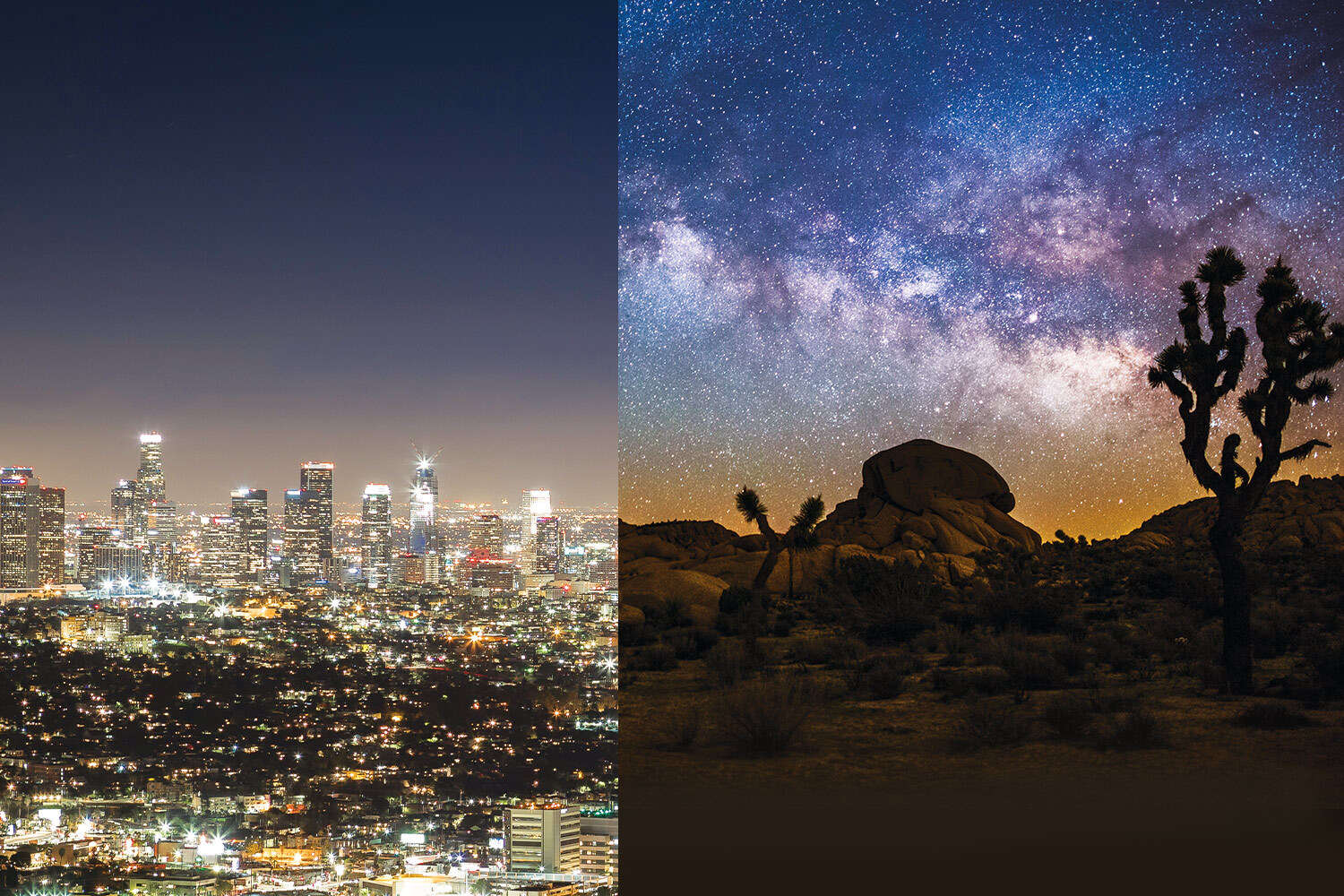
While sweeping change could theoretically be enacted quickly — to put it simplistically, unlike the pollution of CO2, lights can be switched off and the stars will still be there — it’s proving patchy and slow in surprising ways given that all that excess light is indicative of wasted energy. That’s because we’re wedded to the idea that more, ever cheaper artificial light is a good thing, that it’s an indicator of progress. A lack of public lighting is generally found in the poorest parts of the world, in the poorest parts of any city, such that it’s only the poor, or the rich — who can get to visit those more remote places — who get to experience the night sky as our ancestors did.
In part, this attachment to light is down to commerce: advertisers and retailers are convinced they’ll lose some competitive advantage if their billboards or stores are not lit even when there’s nobody around to see them (this doesn’t explain why sports stadiums are so often left alight all night). And in part it’s down to our hardwiring: think prehistoric man gathered close around the campfire against the perceived evils of the dark, telling us that light equals safety.
This isn’t necessarily so, and not least because most city lighting has nothing to do with lighting our way. Several studies have concluded that there is no clear empirical evidence that brighter lighting deters crime. Quite the opposite: the Chicago Alley Lighting Project showed that brightly lit alleyways just made victims easier to see and vandalism easier to do. Indeed, most property crime happens during daylight hours, when people are out. Likewise, a 2015 study of road traffic collisions in the U.K. found that lighting had no effect on the number of occurrences, regardless of the kind of lighting, its intensity or whether it was turned off completely.
What’s more, human night vision is actually much better than it’s often made out to be. Ironically, a Duke University study has concluded that 37% of people living in the U.S. don’t use their night vision, which then atrophies. Why? Because of the amount of light pollution.
So how might the light be put right? Certainly we can all make choices to dial down light pollution — using fewer, warmer and dimmable lights at home, drawing our blinds, angling outdoor security lights downwards, using timers and not leaving them on all night, and so on. Automotive and other product designers too could pay more attention to the leakage from the lights they design.
“Dropping litter is seen as socially unacceptable. Bad or excessive lighting should be regarded in the same way,” suggests Massey of the Royal Astronomical Society.
But, physicist Kyba reckons, it seems that bigger change will likely have to come through regulation that recognizes light as a pollutant and forces a change in behavior. That might entail extending planning permission to include exterior lighting, imposing lighting standards for brightness and color, setting “dark sky” hours when public lighting must be dimmed or doused. Croatia and France are among those countries that have introduced laws regulating lighting, with the U.K. now considering it.
“People say the problem of light pollution is one we could solve just by throwing a switch, but we’re really talking about countless individual people making choices about their lighting, so how do we get everyone to make a good choice?” he asks. “I think a more top-down approach is warranted at the moment because the fact is that most cities, most countries, are only getting brighter.”
“It’s time to start thinking less about having more light and more about having more effective light,” he adds. “They’re not the same thing.”
This article appeared in an InsideHook newsletter. Sign up for free to get more on travel, wellness, style, drinking, and culture.
